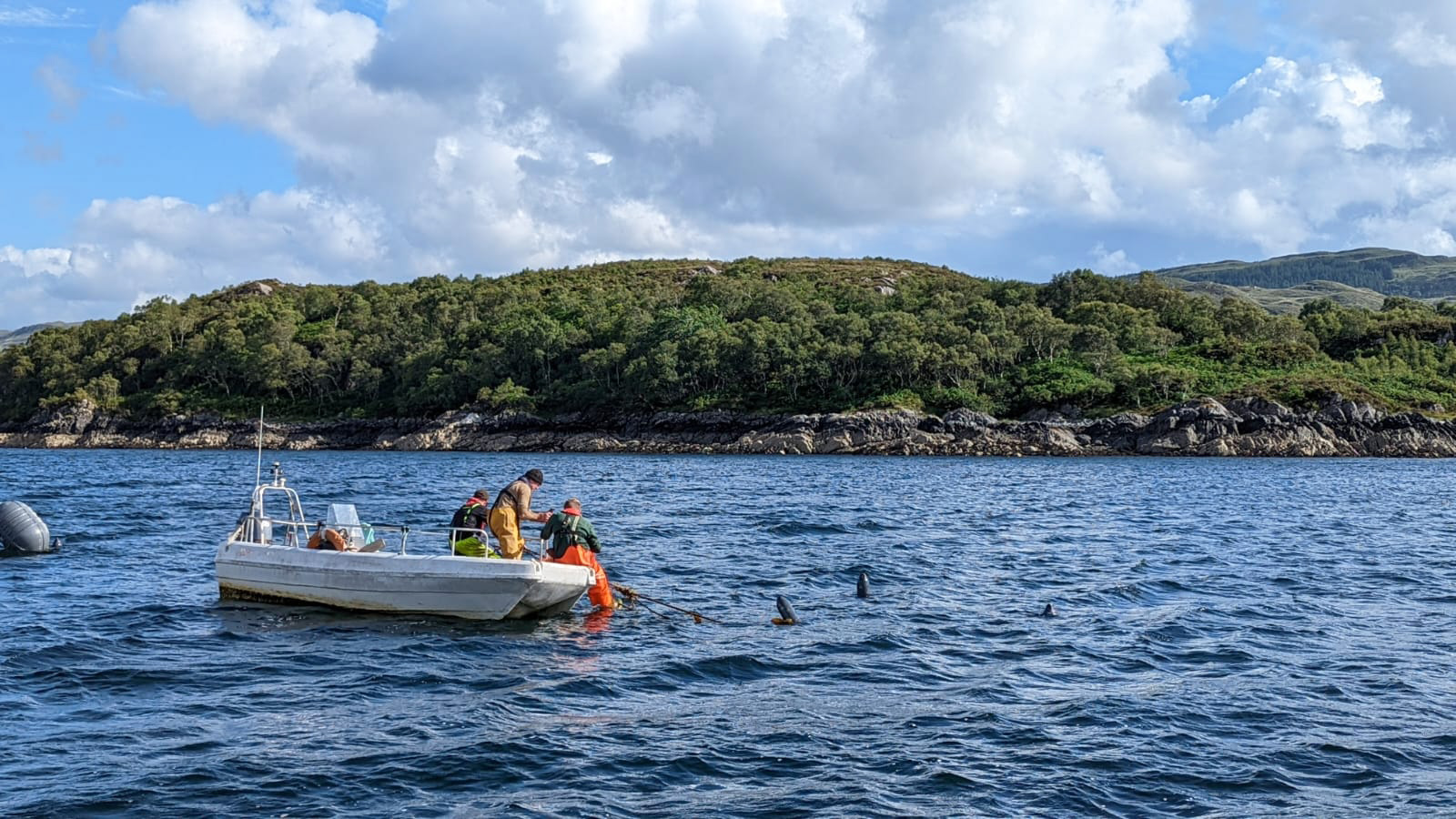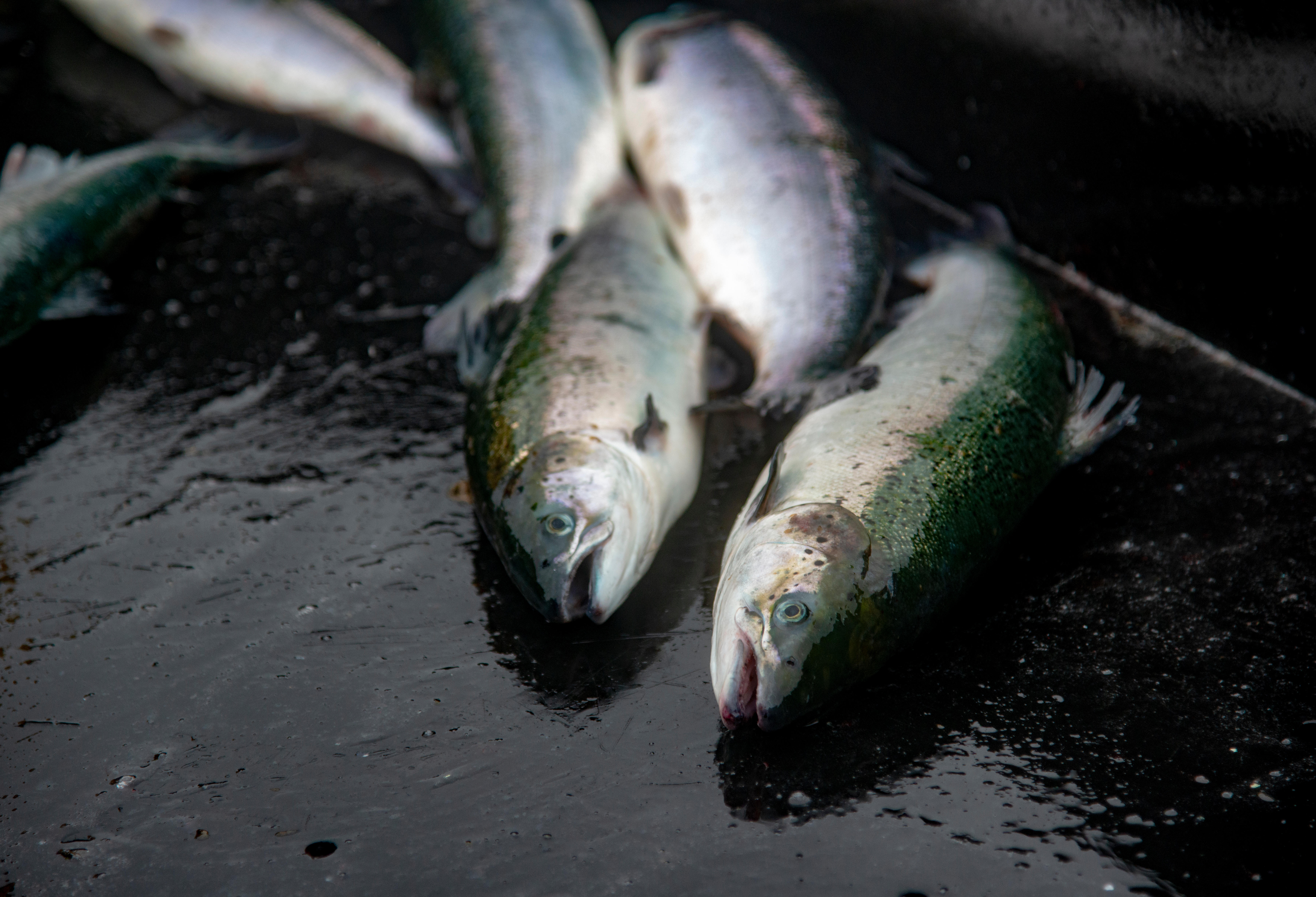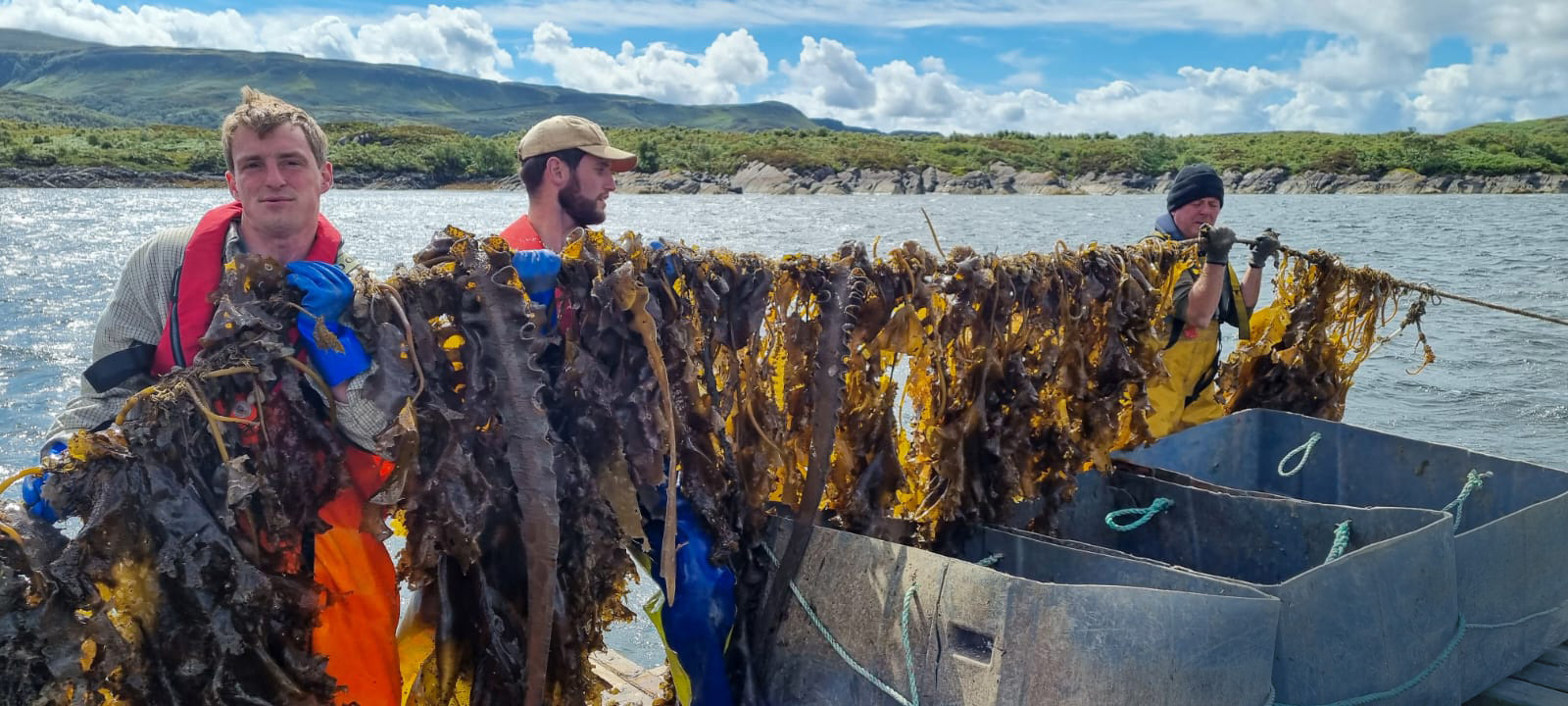Seizing potential: Can seaweed grow a sustainable Scottish economy?
“People still think I’m crazy,” says Amabel Hamilton. “If you’d asked me five years ago, I wouldn’t have said I was going to be doing this.”
It’s been a whirlwind since Hamilton packed up her research job in London and headed to her parents’ home in Thornhill, Dumfriesshire, to start a business in a little-known practice – seaweed-growing.
Now based at Ardtoe on the rocky Lochaber coastline, Atlantic Mariculture cultivates kelp to cater for fine dining establishments in the city Hamilton quit alongside her husband Douglas, who is now her business partner. There, she had been working for the independent conservative think tank Bright Blue, specialising on the environment. Seaweed – used in everything from animal feed to biofuels to pharmaceuticals to textiles – “kept coming up” in her research, she says, and “it seemed crazy that we weren’t growing this incredible product ourselves”, aside from in small quantities from microbusinesses, and instead relying on imports.
The Scottish Government agrees. Projections by Marine Scotland suggest the sector and its supply chain can evolve to generate a total turnover of £71.2m per year by 2040 under a high-growth scenario, creating a sustainable economic boost that feeds into circular economy, net zero and Good Food Nation priorities. But it’ll take investment and infrastructure upgrades to get it there, and if it does, it’s a bit of a Back to the Future scenario – because Scotland had once cornered this market.
During the industrial revolution, around 100,000 people earned a living collecting and burning seaweed as demand for potash and soda for the manufacture of glass and soap grew. Scotland became a world production centre and, at the start of the 19th century, the sector was worth £7.5m per annum in today’s money, helping crofters to supplement their incomes in fragile coastal economies. But when cheaper sources came along, the tide turned. There was another swell of interest as attentions turned to the extraction of alginates for food processing, medicine and other uses, but this too went into decline in Scotland in the 1980s, despite the wide usage of the material.
Now the global market is worth billions, with the value of seaweed farming alone estimated at $5bn. But according to a recent Marine Scotland report, there are just 20 companies or organisations here whose core business relates to seaweed. Most use wild harvested plants (approximately 8,000 tonnes were gathered in 2020) and just nine grow their own. Of these, seven are micro-entities and two are small companies according to Companies House definitions. So can Scotland really get a hold on this market? Cait Murray-Green of Eco Cascade believes it can. “The potential is huge,” she says. “Literally, the world is your oyster.”

With a PhD in chemistry and a Masters in rural sustainable development, Murray-Green is used to thinking up solutions. Her last company, biotech specialist CuanTec, has succeeded in creating a new way to extract a biopolymer from shellfish waste for eco-friendly plastics, and Murray-Green hopes her new venture will provide the same problem-solving function for the seaweed sector and reduce what she sees as barriers to scaling-up.
Founded as a community interest company (CIC), Eco Cascade has secured space alongside Atlantic Mariculture at Ardtoe to create new processing facilities that dry, chop, mill and prep for farmers while also opening labs to researchers. Once the Marine Science Research Centre, the site was previously used to look at fauna rather flora, and hosted a hatchery amongst other things. “What was there for dealing with baby fish is absolutely perfect for dealing with seaweed,” Murray-Green says. “They both want a chunk of nutrients, fresh seawater and a bit of a flow – all of that is there in quite a vast space.”
Currently, the smallest “artisanal” seaweed firms harvest up to just one tonne of produce per year, harvesting, processing, and packaging in-house with air-drying racks, mills, sieves and other low-tech gear. Some larger operators manage up to 50 tonnes per annum, outsourcing manufacture and packaging.
As so often with Scotland, there is a useful comparison with Norway. The northern nation cultivates seaweed in its deep, cold fjords, staggering the annual harvest from south to north as the season develops. Growing sites are close to land and infrastructure, and nomad pickers follow the harvest. Seaweed Solutions, one of the largest growers in Europe, has concessions across 65 hectares. “The total harvest of cultivated seaweed for the west coast of Scotland would be equivalent to a morning in some Norwegian fjords,” Murray-Green says. “Here we have everybody in a fairly small hundred mile gap all harvesting at the same time.
“We have an opportunity to create something which is fundamentally Scottish, in Scottish waters, and bring benefits to Scottish communities,” she says of the potential for a wider west coast revival. “If we really want to develop rural areas, we have to think about sustainable development which benefits the people as well as the environment and economy.”
There are, of course, other aquaculture connections between Scotland and Norway. Two of Scotland’s biggest salmon farmers, Mowi and Scottish Sea Farms, are Norwegian-owned and the sector also uses ova imported from Norway. Globally renowned, the produce is this country’s biggest fresh food export, with international sales valued at £280m in the first six months of the year. Trade body Salmon Scotland reported that it made a £760m economic contribution in 2021, and its chief executive Tavish Scott says it “could be worth £1bn” in “just a few years”.
But salmon farming is not without its critics, who challenge the scale and environmental impact of the pens. Operators have defended their practices and reputations against complaints about animal welfare, outbreaks of harmful sea lice and the release of effluent.

There has been criticism, too, around the harvesting of wild kelp, with around 22,000 people signing a petition which called for a ban on the mechanical dredging of kelp forests in 2018. David Attenborough was amongst those to call for the Scottish Government to “take the necessary action to protect these vital and globally important habitats”, which provide food and shelter for marine life and play a role in protecting coastlines from erosion and flooding.
Roseanna Cunningham, then cabinet secretary for environment, climate change and land reform, backed a Green amendment to the Scottish Crown Estate Bill which ruled out unsustainable commercial harvesting in November of that year.
In contrast, seaweed farming takes little more than a tied line and some seedlings to produce a crop and it’s suggested that the practice could be combined with mussel and scallop farming to diversify incomes and improve waters. Lines are put out before the winter storms and harvested in the spring. “We have seen how damaging industry can be,” says Hamilton – who expects to increase production of her kelp-based liquid fertiliser from 20,000 to 1m litres next year – of avoiding adverse environmental impacts. “It’s important that Scottish seaweed is a respectable product that has garnered the same respect as Scotch whisky or smoked salmon.”
For Murray-Green, the quality goes hand in hand with versatility. “Biotech, plastics, protein-based foods, packaging – every single application for seaweed is showing a need for more sustainable or local production,” she says. “All of the potential markets are expanding. The challenge is to create a facility which allows our farmers the flexibility of being able to service any of those and be able to pivot between them quickly.”
In its report, Marine Scotland stated that though the scale and economic impact of the current sector is “small relative to other industry sectors” like fishing, it was “described as of vital importance to local communities with regard to provision of jobs and income” in its research. Related businesses it spoke to “expressed an intention to expand production and their product ranges” and though “nearly all” believed the harvesting of wild plants would meet the needs for their expansion, they were “keen to incorporate farmed seaweed into their products if it was commercially viable to do so”. Lack of access to investment and funding to set up farms was named as a “key constraint” to development, along with economic feasibility and market access issues.
Murray-Green and partner Alison Baker are currently awaiting news on whether they’ve been successful in securing support from the Marine Fund. Marine Scotland is expected to announce this before Christmas, but no date has been confirmed. The proposed processing facility is, Murray-Green says, an “innovative solution that touches everything” that the Scottish Government “want to cover within their scope”. “It does things to bring jobs back, sustained year-round jobs,” she says. “It does do things to support emerging industry, it does bring state-of-the-art infrastructure into an accessible form. It’s good for the environment and net zero.

“We’re not there to make massive profits for ourselves, so we’re not seeking investment from venture capitalists. This is a warm-hug-for-the-good-of-your-soul opportunity. It will have an impact in the short term and a legacy to leave behind.
“We can support crofting and have seaweed-growing embedded again in culture, improve the quality of the seabed and encourage marine life. But it does require capital investment and support for scale, but on a community basis,” she adds on the CIC format. “We’re asking, is this a sustainable development approach, a green economic approach, to funding new way of addressing scale-up in emerging industries?”
Holyrood Newsletters
Holyrood provides comprehensive coverage of Scottish politics, offering award-winning reporting and analysis: Subscribe